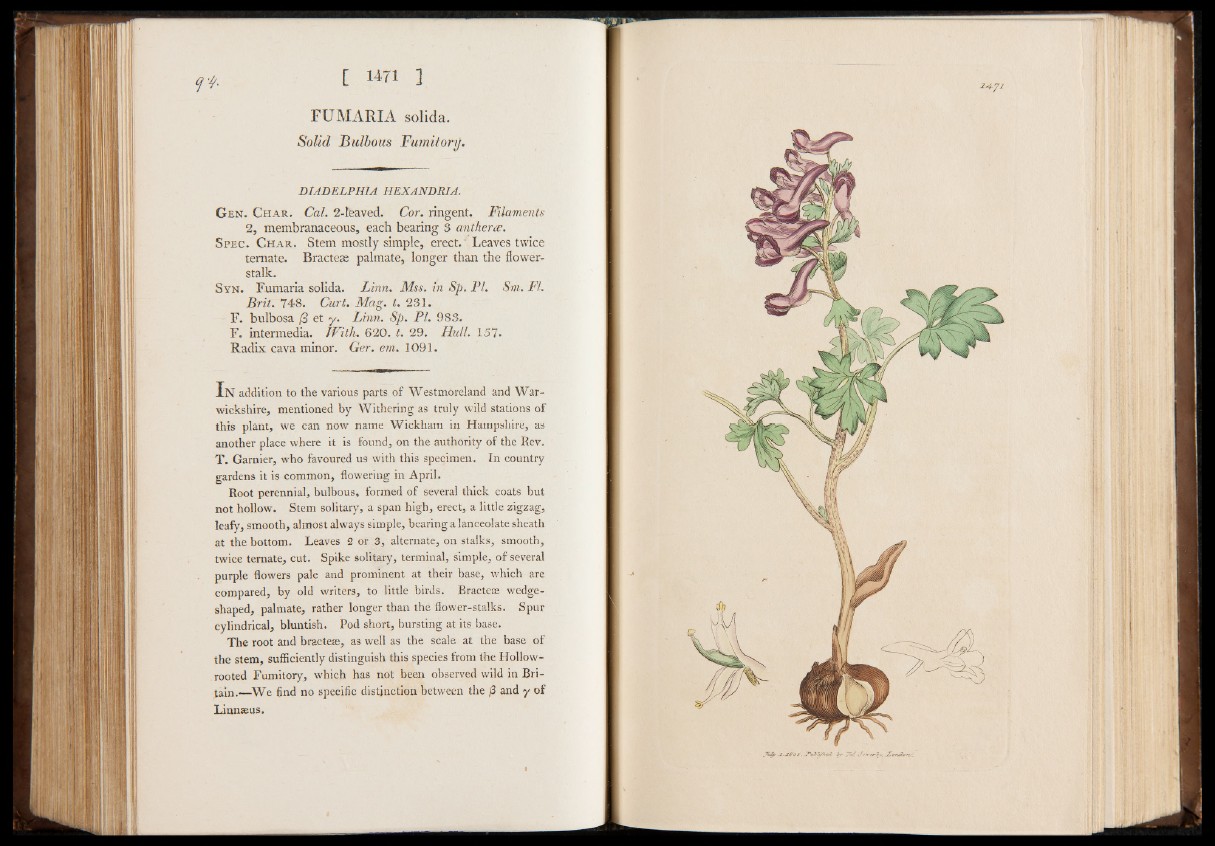
FUMARIA solida.
Solid Bulbous Fumitory.
DIADELPHIA HEXANDRIA.
Gen. Char. Cal. 2 -leaved. Cor. ringent. Filaments
2, membranaceous, each bearing 3 antherce.
S p e c . C h a r . Stem mostly simple, erect. Leaves twice
temate. Bracteae palmate, longer than the flower-
stalk.
Svn. Fumaria solida. Linn. Mss. in Sp. P L Sm. FI.
B rit. 748. Curt. Mag. 1. 231.
F . bulbosa (3 et y . Linn. Sp. PL 983.
F . intermedia. JVith. 620. t. 29. Hull. 157.
R a d ix cava minor. Ger. em. 1091.
I n addition to the various parts of Westmoreland and Warwickshire,
mentioned by Withering as truly wild stations of
this plant, we can now name Wickham in Hampshire, as
another place where it is found, on the authority of the Rev.
T. Gamier, who favoured us with this specimen. In country
gardens it is common, flowering in April.
Root perennial, bulbous, formed of several thick coats but
not hollow. Stem solitary, a span high, erect, a little zigzag,
leafy, smooth, almost always simple, bearing a lanceolate sheath
at the bottom. Leaves 2 or 3, alternate, on stalks, smooth,
twice ternate, cut. Spike solitary, terminal, simple, of several
purple flowers pale and prominent at their base, which are
compared, by old writers, to little birds. Bracteae wedge-
shaped, palmate, rather longer than the flower-stalks. Spur
cylindrical, bluntish. Pod short, bursting at its base.
The root and bracteae, as well as the scale at the base of
the stem, sufficiently distinguish this species from the Hollow-
rooted Fumitory, which has not been observed wild in Britain.—
We find no specific distinction between the /3 and y of
Linnaeus.